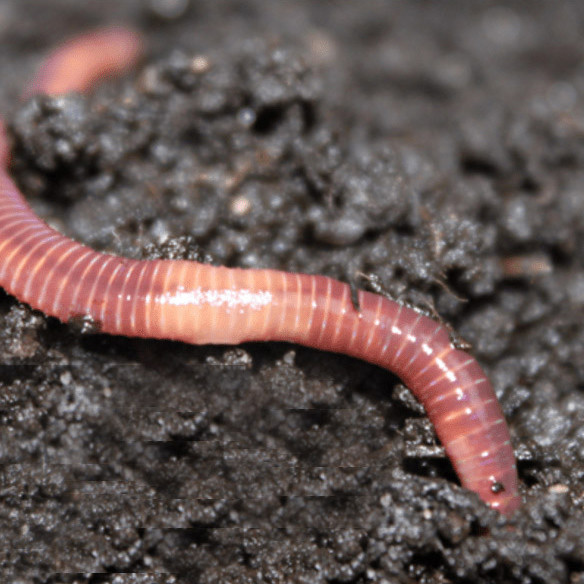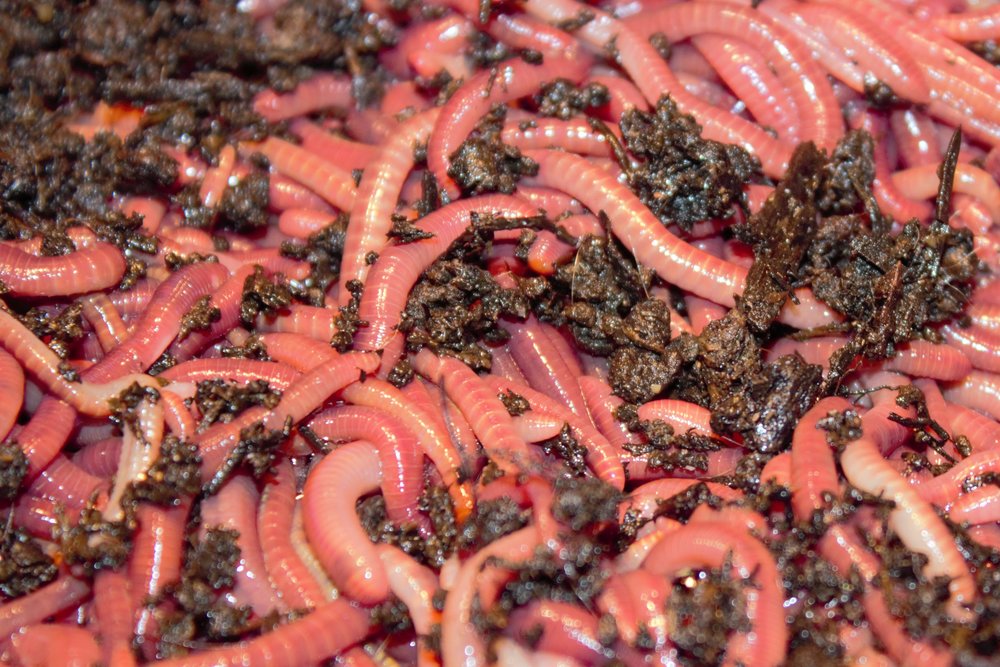Red worms: How to raise a worm bin
Red worms: How to raise a worm bin
Blog Article
How Red Wigglers Can Boost Your Organic Waste Recycling
Red wigglers stand for a crucial component in improving natural waste recycling, effectively converting daily cooking area scraps and yard debris into useful worm spreadings. This procedure not only reduces the volume of waste sent out to land fills yet also enriches soil vitality, advertising much healthier plant growth without the need for synthetic fertilizers. Comprehending the ins and outs of developing a vermicomposting system and the optimum look after these worms can considerably magnify the advantages. The question remains: how can one effectively incorporate this technique right into their regular to make best use of influence?

Benefits of Red Wigglers
Red wigglers, a kind of composting earthworm, offer numerous advantages that make them vital in organic waste recycling. Their capacity to take in a wide range of natural materials makes them extremely effective decomposers. These worms can refine kitchen area scraps, garden waste, and also paper products, changing them into nutrient-rich spreadings. This process not just decreases the quantity of waste sent to land fills however also enhances dirt health and wellness.
In addition, red wigglers improve dirt oygenation and drainage with their delving activities, advertising a much healthier root environment for plants. Their castings are rich in beneficial microbes and crucial nutrients, cultivating durable plant growth and improving soil framework (red wigglers). The usage of red wigglers in composting is an eco friendly alternative to chemical fertilizers, which can have dangerous side results.
Additionally, vermicomposting with red wigglers is a low-maintenance and effective technique of reusing natural waste, making it obtainable for households and neighborhoods alike. Their fast recreation price makes certain a constant supply for ongoing composting efforts, further enhancing their benefits. Generally, red wigglers work as an essential part in lasting waste monitoring and dirt improvement techniques.
Establishing Up a Vermicomposting System
Developing a reliable vermicomposting system calls for cautious preparation and consideration of different elements that add to its success. The structure of a successful system starts with picking an ideal container. Alternatives range from industrial bins to homemade alternatives, but it is crucial that the container is well-ventilated and suitably sized to suit the variety of red wigglers.
Next, the choice of bedding product is crucial. Appropriate bedding includes shredded paper, cardboard, or coconut coir, which supplies both a habitat and a source of carbon for the worms. The bed linens must be moistened but not extremely wet to avoid anaerobic conditions.
Keeping the ideal atmosphere is vital. Red wigglers thrive in temperature levels in between 55 ° F and 77 ° F(13 ° C to 25 ° C )and require a pH degree around neutral. Checking wetness levels is additionally important, as excessive moisture can bring about odor problems, while as well little can dry out the worms.
Last but not least, putting the vermicomposting system in a shaded area secured from direct sunshine will aid maintain a secure atmosphere. With these considerations in mind, one can properly set up a thriving vermicomposting system that boosts organic waste recycling.
What to Feed Red Wigglers
Feeding red wigglers the ideal materials is basic to maintaining a healthy and balanced vermicomposting system. These worms flourish on a varied diet mostly composed of organic issue, that includes fruit and veggie scraps, coffee grounds, crushed eggshells, and shredded paper. It is vital to prevent feeding them meat, milk, oily foods, or any refined items, as these can produce smells, bring in insects, and bring about an unhealthy atmosphere.
A well balanced diet for red wigglers promotes ideal food digestion and nutrient production. Go for a mix of environment-friendly materials, high in nitrogen, such as vegetable peels and lawn trimmings, and brown materials, rich in carbon, like dried out fallen leaves and cardboard. This balance makes sure a lasting food resource while maintaining wetness degrees in the worm container.
Moreover, it is suggested to chop or shred larger scraps to quicken disintegration and make the food extra easily accessible to the worms. Frequently monitoring the usage price will certainly assist identify the proper quantity to feed, protecting against overfeeding and maintaining a thriving community. By supplying an appropriate diet plan, you not just sustain the health and wellness of red wigglers however likewise improve the effectiveness of your vermicomposting initiatives.
Keeping Your Worm Container
To make sure the health and wellness and productivity of your vermicomposting system, keeping your worm container is important. Regular surveillance of wetness levels is essential; the bed linens must be damp yet not soggy. If it becomes also wet, excess dampness can cause anaerobic conditions, damaging your worms. On the other hand, if it is too completely dry, worms may come to be inactive or pass away.
Severe temperatures can worry or eliminate your worms. To achieve this, put your container in a climate-controlled environment away from direct sunshine or heat sources.
Carefully transforming the bed linens with a yard fork every couple of weeks will help aerate the material and stop compaction - red wigglers. If this happens, lower feeding and include even more carbon-rich products like shredded paper or cardboard.
(Western North Carolina Worm Farms)
Utilizing Worm Castings in Gardening

Worm castings, typically referred to as "black gold" by gardeners, are a highly nutritious organic fertilizer that can considerably enhance dirt wellness and plant development. These spreadings are created by red wigglers as they digest raw material, causing an abundant, dark, crunchy compound brimming with advantageous bacteria.
Including worm spreadings right into garden dirt enhances its structure, aeration, and dampness retention, developing an ideal environment for root growth. The high nutrient material of worm castings, consisting of nitrogen, phosphorus, and potassium, adds to energetic plant growth and enhanced returns. Additionally, look at these guys worm spreadings contain necessary trace minerals and enzymes that advertise the overall wellness of plants, allowing them to much better hold up against bugs and diseases.
Worm castings can be used directly to the dirt or blended into potting blends for container gardening. A slim layer spread over garden beds or contributed to compost heap can additionally boost the microbial task and nutrient account of the compost. As a sustainable and environment-friendly plant food option, worm spreadings support natural horticulture techniques while minimizing dependence on synthetic plant foods, thus cultivating a healthier community.
Verdict
In conclusion, the assimilation of red wigglers into organic waste reusing practices provides a viable option for boosting soil health and wellness and promoting lasting horticulture techniques. By successfully decomposing kitchen area scraps and yard waste, red wigglers add to nutrient-rich worm castings that enhance soil oygenation and dampness retention. This environmentally friendly strategy not only decreases garbage dump payments but also reduces the reliance on chemical plant foods, eventually fostering healthier environments and liable waste management techniques.
Report this page